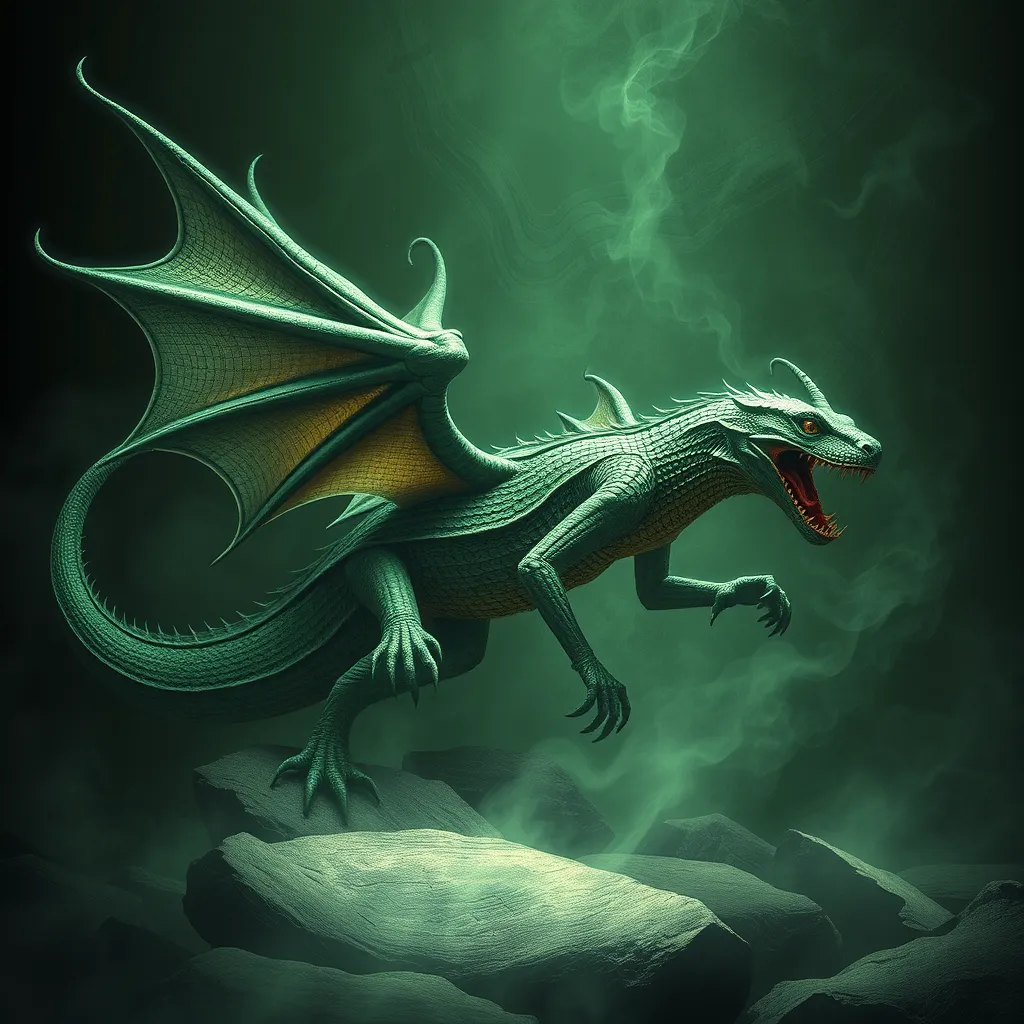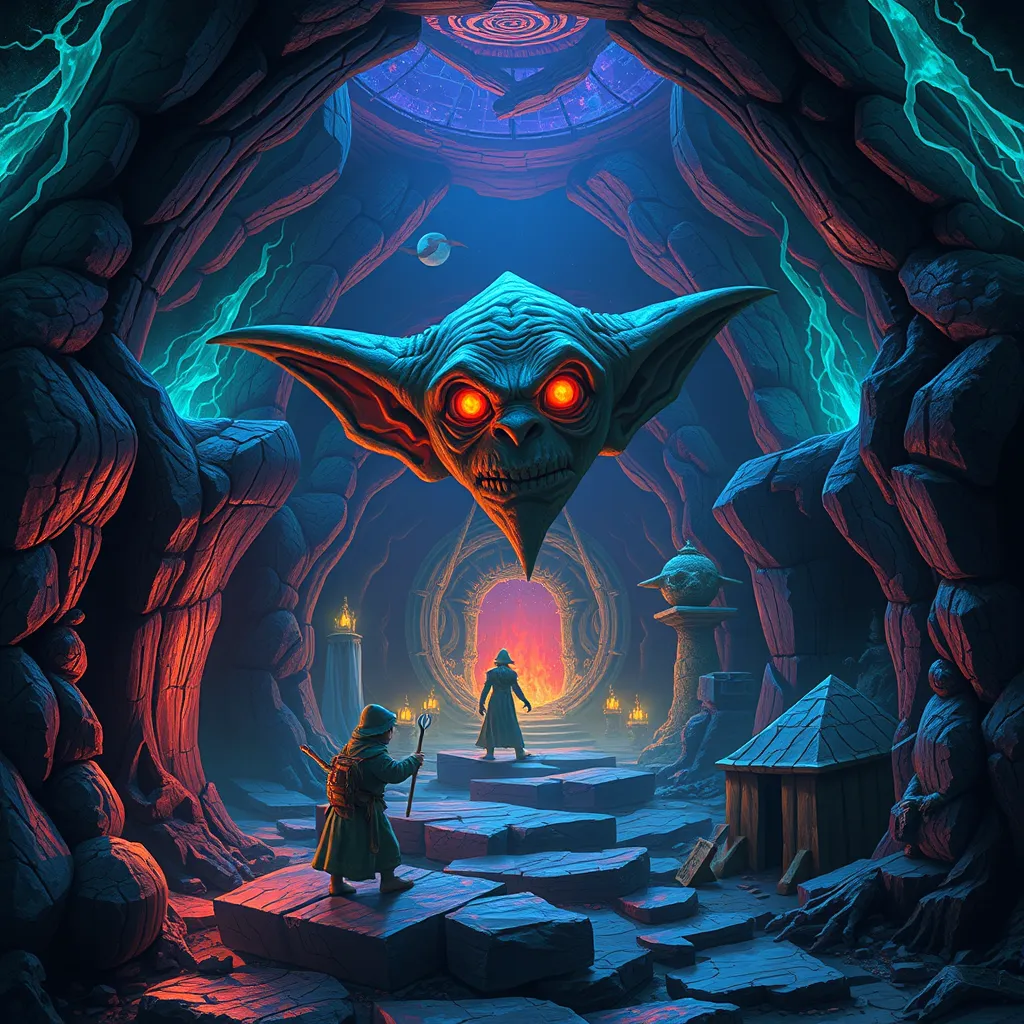The Basilisk in Music: Exploring the Monster’s Influence on Classical and Contemporary Compositions
I. Introduction
The Basilisk, often described as a serpent or dragon with lethal powers, has captured the imagination of cultures throughout history. Its mythos encompasses a variety of interpretations, including that of a creature whose gaze can kill and whose breath can wither. The significance of the Basilisk transcends mere folklore; it embodies themes of fear, power, and transformation, making it a compelling subject in various artistic forms.
This article aims to explore the influence of the Basilisk on musical compositions, examining how this mythical creature has inspired both classical and contemporary artists. By delving into the Basilisk’s representation in music, we can uncover the enduring power of myth in shaping artistic expression.
II. The Basilisk in Mythology and Literature
The legend of the Basilisk dates back to antiquity, with historical origins found in the writings of Pliny the Elder and later medieval texts. Described as a hybrid creature, part serpent and part bird, the Basilisk symbolizes death and destruction but also the potential for renewal through its defeat.
In literature and art, the Basilisk has often been depicted as a fearsome adversary, challenging heroes and serving as a metaphor for the darker aspects of human nature. Its characteristics, including its ability to petrify with a glance, have made it a powerful symbol of fear and power.
III. The Basilisk in Classical Music
A. Notable classical compositions inspired by the Basilisk
Several classical compositions have drawn inspiration from the Basilisk myth. One notable example is Hector Berlioz’s “La Damnation de Faust,” where the fearsome imagery of the Basilisk is used to convey the themes of temptation and destruction.
Another significant work is Ottorino Respighi’s “Pini di Roma” (Pines of Rome), where the Basilisk’s mythos is reflected in the orchestration, evoking a sense of danger and awe through musical motifs that suggest its legendary powers.
B. Composers who drew inspiration from the Basilisk
Several composers have incorporated the Basilisk into their works, infusing their music with the creature’s symbolic weight. For instance:
- Hector Berlioz: Known for his dramatic storytelling through music, Berlioz’s works often feature mythological themes, including the Basilisk.
- Ottorino Respighi: His exploration of nature and mythology in compositions often reflects the ominous presence of the Basilisk.
The contextual relevance of the Basilisk in these composers’ works highlights the creature’s enduring influence and its ability to resonate with themes of human struggle and triumph.
IV. The Basilisk in Contemporary Music
A. The resurgence of mythological themes in modern compositions
In recent years, there has been a notable resurgence of mythological themes in contemporary music, with the Basilisk making appearances in various genres. This trend reflects a cultural fascination with ancient myths and their relevance to modern narratives.
B. Notable contemporary artists and their interpretations of the Basilisk
Artists across genres have interpreted the Basilisk in unique ways:
- Film Scores: Composers like Hans Zimmer have incorporated mythological elements into their scores, evoking the Basilisk’s menacing presence in soundtracks.
- Rock and Metal: Bands like Nightwish and other symphonic metal groups often draw on mythical themes, including the Basilisk, to enhance their lyrical content and musical motifs.
- Electronic Music: Artists in the electronic genre have employed samples and sound design to create atmospheric representations of the Basilisk, emphasizing its otherworldly qualities.
These interpretations not only showcase the versatility of the Basilisk in modern music but also highlight its ongoing relevance in storytelling.
V. Cross-Genre Influence of the Basilisk
A. The Basilisk in film and video game soundtracks
The Basilisk has also found a place in film and video game soundtracks, where its terrifying qualities can heighten narrative tension. Iconic films and series often use the Basilisk as a metaphor for internal or external struggles, enhancing the emotional impact of key moments.
B. Influence on popular music and cultural references
In popular music, references to the Basilisk often manifest as lyrical motifs that explore themes of fear and power. Artists may allude to the creature as a symbol of overcoming adversity or the darker sides of human experience.
C. Collaborations between classical and contemporary artists
Collaborations between classical and contemporary artists have also brought the Basilisk into new musical forms. These cross-genre projects often blend orchestral arrangements with modern styles, creating innovative interpretations of the Basilisk’s mythos.
VI. Thematic Analysis of Basilisk Representations in Music
A. Common themes associated with the Basilisk (fear, power, transformation)
Common themes associated with the Basilisk include:
- Fear: The Basilisk embodies the primal fear of the unknown and the dangers that lurk in the shadows.
- Power: As a symbol of ultimate power, the Basilisk represents both the allure and the danger of absolute control.
- Transformation: The creature’s ability to petrify suggests the potential for transformation, whether it be death leading to rebirth or the challenge of overcoming one’s fears.
B. Emotional and psychological impact of the Basilisk in musical narratives
The emotional and psychological impact of the Basilisk in music often resonates deeply with audiences. Through the use of dissonance, dynamic contrasts, and thematic development, composers can evoke feelings of dread, awe, and ultimately, catharsis.
C. Comparative analysis of differing interpretations across genres
Across genres, the Basilisk is interpreted in varying ways, reflecting cultural contexts and artistic intentions. While classical compositions may emphasize grandeur and drama, contemporary works might focus on raw emotion and personal struggle, showcasing the creature’s multifaceted nature.
VII. The Basilisk’s Legacy in Music
A. How the Basilisk continues to inspire new works
The Basilisk continues to inspire new works, as artists explore its legend and the themes it represents. Each new interpretation adds layers to the creature’s legacy in music.
B. The role of mythology in musical creativity and innovation
Mythology serves as a rich source of creativity and innovation in music. The Basilisk, as a representative figure, encourages artists to delve into the depths of human experience, drawing connections between ancient tales and contemporary life.
C. Future trends: where the Basilisk might appear next
Looking ahead, the Basilisk may continue to appear in various artistic forms, including multimedia projects, installations, and collaborations that blend different musical traditions. As artists seek to connect with audiences through shared narratives, the Basilisk’s enduring allure will likely inspire new creations.
VIII. Conclusion
In conclusion, the influence of the Basilisk on music is profound and multifaceted, spanning from classical compositions to contemporary interpretations. This creature embodies timeless themes of fear, power, and transformation, allowing it to resonate with artists and audiences alike.
The enduring power of myth in artistic expression is a testament to humanity’s quest for understanding and meaning. As we continue to explore mythical themes in music, the Basilisk serves as a powerful reminder of the stories that shape our cultural landscape.
We invite readers to delve deeper into the world of mythical inspiration in music, discovering the myriad ways in which these tales continue to inform and transform artistic expression.



